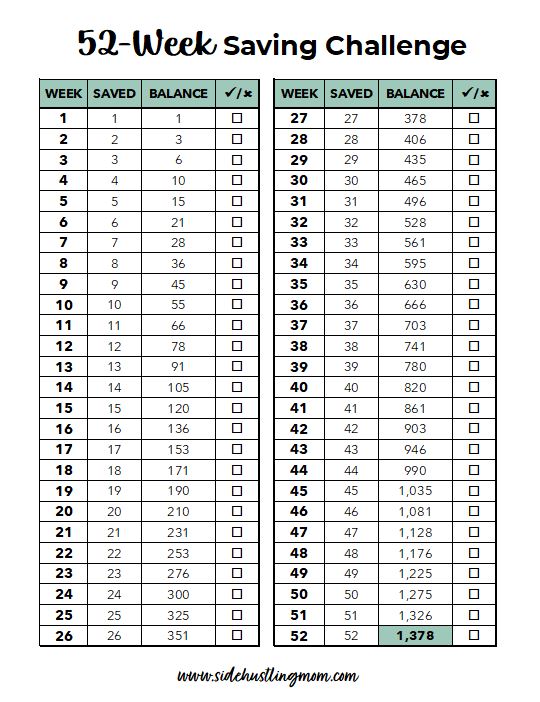This post may contain affiliate links to products or services. I may receive a commission for purchases made through these links with no cost on you. Please read my disclosure for more information.
Money saving challenges are creative and enjoyable ways to make saving money fun.
Saving money is a vital aspect of achieving financial stability. However, the traditional approach to saving can sometimes feel tedious or overwhelming.
And incorporating a sense of fun into your financial goals can make the process more engaging and sustainable.
In this article, we’ll explore fun money-saving challenges that not only encourage financial discipline but also make the journey enjoyable.
7 MONEY SAVING CHALLENGES TO START SAVING
Money-saving challenges are a fantastic way to turn the often-daunting task of saving into an exciting adventure.
Here are the 7 fun money saving challenges to start your saving journey:
1. The Spare Change Money Saving Challenge

The Spare Change Challenge is a classic and simple way to save money without feeling the pinch.
The beauty of this challenge lies in its simplicity and the surprise factor of watching your savings grow.
How to do it: Choose a jar or container, preferably transparent, that allows you to see the accumulating change.
Every time you come home with coins in your pocket or wallet, drop them into the jar.
How much you’ll save: Surprise, surprise! It depends on the size of the jar or container you used and the value of each spare coin.
Watching the jar fill up gradually creates a tangible representation of your financial progress, turning the act of saving into a rewarding visual experience.
The Spare Change Jar Challenge not only helps you save money effortlessly but also turns the act of saving into a tangible and rewarding experience.
Tip: And to add an extra layer of excitement, consider setting a goal for your Spare Change Jar Challenge.
Whether it’s an additional savings, weekend getaway, a new gadget, or a special treat, having a specific purpose for your saved change can boost motivation.
2. The 52-Week Money Saving Challenge

The 52-Week Money Challenge is a structured and gradual approach to saving that aligns with the weeks of the year.
How to do it: The idea is to start by saving like $1 in the first week, $2 in the second week, $3 in the third week, and so on. You save using your own currency (€, £, ₱, etc..).
How much you’ll save: By the end of the 52 weeks, you’ll have saved $1,378.
This challenge provides a clear plan for increasing your savings over time while allowing for flexibility in your weekly contributions.
You can also customize the challenge based on your financial situation, reversing the order if you prefer to start with larger amounts and decrease gradually.
The 52-Week Money Challenge is not only an effective way to accumulate savings but also a structured method to cultivate a consistent saving habit.
Tip: Grab my FREE 52 Weeks Saving Challenge Printable
** Please check out various 52 Week Savings Challenge Printable in my Etsy shop HERE.
3. The Bi-Weekly Money Saving Challenge
Unlike traditional monthly savings challenges, the Bi-Weekly Money Challenge aligns with the frequency of your pay checks.
This makes it particularly effective and manageable approach for those who receive their salaries every two weeks.
How to do it: Tailored for those receiving bi-weekly pay checks, this challenge involves committing to save a set amount from each pay check.
How much You’ll save: If you consistently save 100 each payday, you will save 2,600 in a year.
For this challenge to be effective, you should set realistic short-term and long-term savings goals to stay focused.
You can benefit from incremental growth, steadily increasing your savings without disrupting your budget.
Tip: You can simplify the process by automating transfers from your checking to savings account every payday.
** Please check out various Printable Bi-Weekly Savings Challenges in my Etsy shop HERE.
4. The No-Spend Weekend Challenge
A weekend without spending money may sound challenging, but it’s an excellent way to reassess your spending habits and save a significant amount in a short time.
The No-Spend Weekend Challenge involves committing to spending absolutely nothing for a specific weekend.
This doesn’t mean you can’t enjoy your time; it just requires a bit of creativity.
How to do it: Plan activities that don’t require spending money, such as picnics in the park, hiking, or exploring free local events.
You can also use the time to declutter your home and find items you no longer need, which you can sell or donate.
How much You’ll save: Depends on the amount of money you spend over the weekend. If for example, you eat out with your family on a restaurant every weekend. Each meal is costing you around $100, that is $400 per month.
If you follow, no spend weekend challenge for at least 2 weeks, you could potentially save $200 a month.
The No-Spend Weekend Challenge provides a refreshing perspective on saving by encouraging you to cut out non-essential spending for a designated weekend.
Not only does this challenge help you save money, but it also promotes mindfulness about your spending choices and encourages a more intentional approach to consumption.
The challenge fosters creativity, resourcefulness, and a deeper appreciation for the simple joys of life.
Tip: Plan your weekend with your family. It will be fun to do different things every week. Try to challenge them to think of ways you will enjoy without spending.
Also you could ask them to join your challenge. That’ll be fun!
5. The 100 Envelope Challenge

The 100 Envelope Challenge transforms the act of saving into a hands-on experience. It creates excitement and motivation as you work towards your financial goals, one envelope at a time.
Each envelope represents a monetary milestone, starting from $1 to $100.
How to do it: You’ll need 100 envelopes and number each envelope from 1 to 100.
Then every day, you grab an envelope, insert the corresponding amount written in the envelope, and seal it.
For example, you selected an envelope with the number 50 on it, then you’ll insert your $50 into the envelope.
How much You’ll save: By the end of 100 days, you will save $5,050.
This challenge encourages a tangible connection to your savings journey and adds an element of suspense as you reach higher levels. Display the envelopes prominently to visualize your financial milestones.
The 100 Envelope Challenge transforms the act of saving into a concrete, hands-on experience, creating excitement and motivation as you work towards your financial goals, one envelope at a time.
Tip: Make sure to place your envelopes on a secure and accessible place as you will be depositing cash there every day.
** Please check out Printable 100 Envelope Savings Challenges in my Etsy shop HERE.
6. The “Random Acts of Savings” Challenge
The Random Acts of Savings Challenge injects spontaneity and surprise into your saving routine.
It involves incorporating unexpected and unplanned opportunities to save money into your daily life.
This challenge not only makes saving unpredictable and enjoyable but also encourages you to discover creative ways to cut costs.
How to do it: Develop a list of everyday scenarios or occurrences where you can seize the opportunity to save money unexpectedly.
This could include finding discounts, opting for more cost-effective alternatives, or taking advantage of special promotions.
Attach savings values to each item on your list. For example, finding a coupon might be worth $5, choosing a generic brand over a premium one could be $3, or making your coffee at home instead of buying it could be $2.
How much You’ll save: Depending on your desire to save money and finding the best deals. This could range from $40 – $100/ month.
For example, if you could make your own coffee for 5 days in a week x 4 weeks, that is equal to around $40.
Tip: Create a savings journal to track each random act and the corresponding amount saved. This adds an element of excitement to the challenge.
7. The Penny Saving Challenge

Harnessing the power of the smallest denomination, the Penny Saving Challenge turns everyday loose change into a substantial savings fund.
How to do it: Start by saving penny a day, then increasing that by one penny each day, for 365 days.
How much you’ll save: If you follow this plan, you’ll have an extra $667.95 by this time of next year.
This challenge underscores the impact of compounding, showcasing how even small daily contributions can lead to significant savings over time.
It’s an excellent option for those who prefer a gradual approach and want to witness tangible results without feeling a significant impact on their daily expenses.
Tip: This challenge can be the perfect example in saving even if you have a low income.
CONCLUSION
Saving money doesn’t have to be a daunting or joyless task.
By incorporating fun and creative money-saving challenges into your financial routine not only makes the process enjoyable but also contributes to building a healthy and sustainable saving habit.
Whether you opt for the classic Spare Change Jar Challenge, the structured 52-Week Money Challenge, the routine-oriented Bi-Weekly Money Challenge, the mindful No-Spend Weekend Challenge, the tactile 100 Envelope Challenge, the Random Acts of Savings Challenge, or the gradual Penny Saving Challenge, each approach offers a unique way to strengthen your financial discipline while embarking on an exciting journey toward financial security.
Choose a challenge that resonates with your goals, involve your friends or family, and kickstart your savings journey today.
ACTION PLAN
1. Choose one saving challenge that you want to do.
2. Set a goal and purpose for saving.
3. Be consistent and focus.
4. See how much you saved by the end of 2024.
You could check out my Etsy shop for fun money saving challenges.





